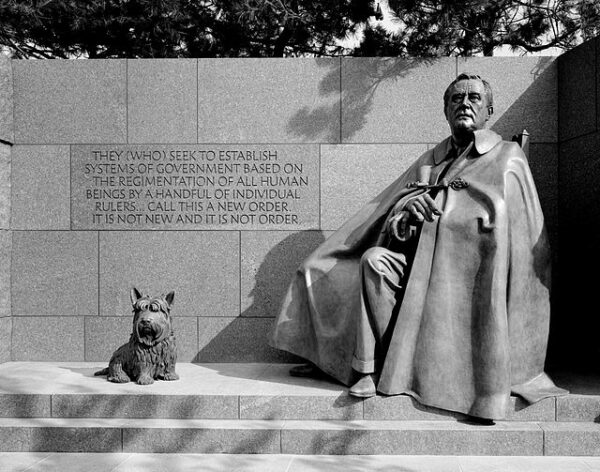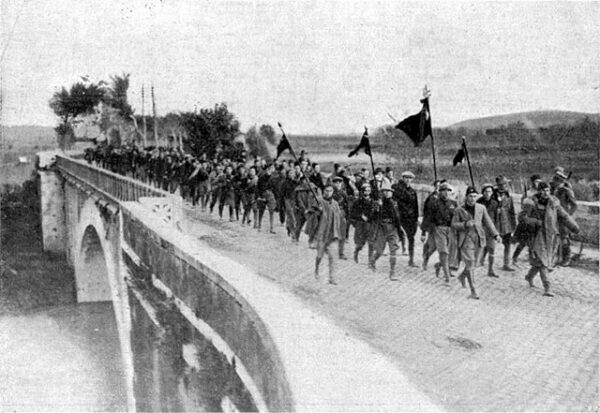On October 30, 1941, President Franklin D. Roosevelt approved $1 billion in Lend-Lease aid to Allied nations, marking a pivotal point in the United States’ role in World War II. This decision expanded the scope of the Lend-Lease Act, passed by Congress in March of the same year, which empowered the United States to provide military and economic assistance to countries whose defense was deemed vital to American security. By signing off on this substantial aid package, Roosevelt reaffirmed the United States’ commitment to supporting nations fighting against Axis powers, even before officially entering the war.
The Lend-Lease Act was born out of the increasing desperation of the Allied forces, particularly Great Britain, as they struggled under the weight of German aggression in Europe. The British Empire, bearing the brunt of Hitler’s expansionist ambitions, was financially and materially depleted. With American public opinion initially leaning against direct involvement in another global conflict, Roosevelt had to devise a way to support the Allies without breaching the nation’s commitment to neutrality. The solution was a program that allowed the U.S. to lend or lease military equipment, supplies, and other resources to Allied nations without requiring immediate payment.
That October 30 approval brought a new urgency to the U.S. support. As Nazi Germany expanded across Europe, seizing territories and bombing cities, the threat to global stability intensified. In a speech defending Lend-Lease, Roosevelt famously compared it to lending a garden hose to a neighbor whose house was on fire; the aim was to keep the flames at bay without expecting an immediate return. This metaphor resonated with the American public, highlighting the importance of stopping Axis expansion before it reached U.S. shores.
With the approval of $1 billion in aid, the United States provided a variety of military equipment and supplies, including tanks, aircraft, trucks, food, and ammunition. These supplies were directed primarily to Great Britain and, later, the Soviet Union, which joined the Allies after Germany invaded in June 1941. The financial backing enabled these nations to maintain their defenses and mount counterattacks against the Axis powers, fostering cooperation and boosting morale among Allied forces. Furthermore, the act represented a symbolic commitment to democracy and an indirect challenge to the totalitarian ideologies of Nazi Germany and Fascist Italy.
This Lend-Lease package not only bolstered the immediate military needs of the Allies but also helped solidify an alliance that would later form the basis of the United Nations. Roosevelt understood the broader implications of this assistance; by helping these nations defend themselves, the United States was indirectly safeguarding its own security interests. Although American troops had not yet joined the fight, the provision of material support allowed the U.S. to contribute significantly to the war effort, maintaining a strategic distance while preparing for the possibility of direct involvement.
The approval of $1 billion in aid also had far-reaching economic implications. The American industrial sector, which had been suffering from the effects of the Great Depression, found renewed purpose in producing supplies and equipment for Lend-Lease. This surge in demand for military goods helped revitalize industries and created jobs, laying the foundation for what would become the “Arsenal of Democracy.” As factories transitioned to wartime production, the American economy began to recover and prepare for the challenges ahead. This economic shift not only aided the Allies but also improved the lives of American workers and their families, bringing stability after years of hardship.
While the program was generally successful, it was not without controversy. Some isolationists criticized Roosevelt’s decision, arguing that the aid made the U.S. vulnerable to attack by provoking the Axis powers. The opposition, however, gradually waned as public opinion shifted in favor of supporting the Allies, especially following the bombing of Pearl Harbor on December 7, 1941, which led the U.S. to enter the war. The importance of Lend-Lease in the subsequent Allied victories underscored Roosevelt’s foresight in authorizing the aid, as it ultimately allowed the Allies to hold the line against Axis forces long enough for America to mobilize fully.
In retrospect, the October 30, 1941, approval of $1 billion in Lend-Lease aid was a defining moment in the United States’ transition from isolationism to internationalism. It represented Roosevelt’s strategic use of resources to support the Allied cause without committing American soldiers until absolutely necessary. This decision helped build a wartime economy, strengthen the Allied front, and set the stage for the post-war global order. The Lend-Lease Act, with its October funding boost, was a vital lifeline for nations resisting oppression, underscoring the United States’ emerging role as a global leader.






